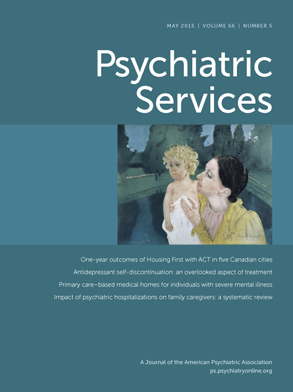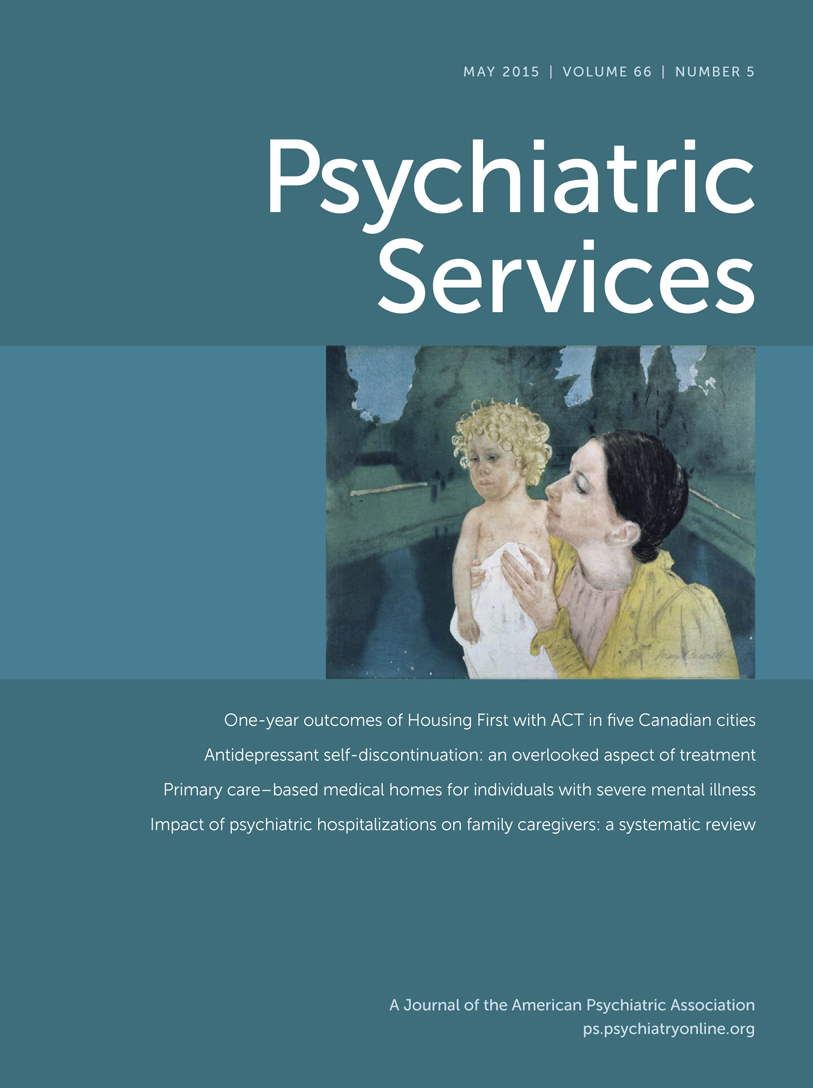NIMH updates strategic objectives and research priorities: The National Institute of Mental Health (NIMH), the leading federal agency for research on mental illness, has issued a new
Strategic Plan for Research, updating its 2008 objectives. The goal over the next five years is to balance the need for long-term investment in basic research with urgent mental health needs, in particular the substantial disability caused by mental illnesses. The new plan is based on four high-level strategic objectives: define the mechanisms of complex behaviors; chart mental illness trajectories to determine when, where, and how to intervene; strive for prevention and cures; and strengthen the public health impact of NIMH-supported research. The rationale for setting new objectives, as explained in the plan document, is the need to adapt to changes in the “ecosystem” within which NIMH functions. Changes since 2008 include heightened recognition of the public health burden of mental illness, as highlighted in media coverage of mass shootings, PTSD and suicide among returning veterans, high rates of mental illness in jails and prisons, and the increasing prevalence of autism. Also new since 2008 is the BRAIN Initiative, announced by President Obama in 2013, as well as changes in the health care landscape resulting from national reform and parity laws. The plan describes several themes that cut across the four objectives, including the need to transform diagnostics via the NIMH’s Research Domain Criteria project, the need to accelerate therapeutics via trials that move beyond assessing interventions and toward revealing more about the mechanisms of disorders, and the need to transform the trajectory of mental illnesses through preemptive medicine, such as services for first-episode psychosis. A diverse group of stakeholders contributed to the plan
, which also incorporates public comments. More information about the
Strategic Plan for Research is available on the NIMH Web site at
www.nimh.nih.gov/news/science-news/2015/new-nimh-strategic-plan-aims-to-focus-accelerate-mental-health-research.shtml.
AHRQ resources focus on integration of care: The Agency for Healthcare Research and Quality (AHRQ) has released
A Guidebook of Professional Practices for Behavioral Health and Primary Care Integration: Observations From Exemplary Sites, which identifies practices used by eight high-performing primary care organizations that have successfully integrated care. All are multispecialty groups, five in urban and three in rural areas, including four federally qualified health centers, two hospital systems, a government-operated facility, and a private practice. The 113-page guide organizes findings into two categories: organization-level practices and interpersonal and individual practices. Key practices for organizations include a clear focus on the mission to serve patients by providing population care and on continuous quality improvement. Leaders at successful organizations strongly advocated for integrated care at the state and community levels, managed finances to support the mission, emphasized the value of hiring and training staff to deliver integrated care, and ensured that clinical workflows and physical space were structured to accommodate the high degree of interdependence required among staff performing integrated care tasks. At the individual level, clinicians in the eight organizations were committed to ensuring that patients received the level of integrated care they needed, from the right clinicians, when that care was needed. Also cited as key individual-level practices were clinical supervision focused on problem solving and a commitment to improving communication practices. Another new AHRQ resource is
Provider- and Practice-Level Competencies for Integrated Behavioral Health in Primary Care: A Literature Review. The 18-page review highlights a comprehensive set of competencies, practices, and staff required to advance integration efforts. Both documents are available on the AHRQ Web site (
integrationacademy.ahrq.gov).
Milbank brief on population health and ACOs: The term “population health” is increasingly used by policy makers and others as a way to focus efforts of care delivery systems, public health agencies, behavioral health providers, social services, and other entities to improve health outcomes at a community level. An issue brief by the Milbank Memorial Fund,
Population Health in Medicaid Delivery System Reforms, looks at ways in which states have incorporated population health goals and priorities into accountable care organizations (ACOs) and ACO-like models, testing innovative payment systems under the Affordable Care Act. As of January 2015, more than 15 state Medicaid programs were actively engaged in either operating or developing ACOs, according to the brief. On the basis of lessons learned from state initiatives, the brief describes four broad strategies that state policy makers can use to promote population health in Medicaid ACOs. An important step for states is to recognize the broad extent of their authority via legislative and regulatory processes to shape ACO governance structures and program design to ensure promotion of population health and to require ACOs to partner with public health, social services, and community agencies. Case studies from Minnesota, Oregon, and Vermont illustrate other key considerations, in particular, shared savings and risk payment arrangements. The issue brief is available on the Milbank Memorial Fund site (
www.milbank.org/publications/milbank-issue-briefs).
SAMHSA guide to medication-assisted treatment for alcohol use disorder: Research shows that medications are underused in the treatment of alcohol abuse and dependence. Resistance to using medications persists, even though many experts believe that individuals with moderate or severe alcohol-related problems should be routinely offered medication-assisted treatment. A new guide for practitioners from the Substance Abuse and Mental Health Services Administration (SAMHSA) describes the use of three FDA-approved medications shown to be effective in the management of alcohol dependence or the prevention of relapse: acamprosate calcium, disulfiram, and naltrexone (both oral and extended-release injectable). The 34-page guide provides details on how to select and administer a medication, including dosing guidelines and drug interaction information. It also describes steps for conducting patient screening and assessment, developing a treatment plan, integrating pharmacological and psychosocial treatments, and monitoring patient progress. An appendix provides links to a wide range of resources, including Web-based courses.
Medication for the Treatment of Alcohol Use Disorder: A Brief Guide is available on the SAMHSA Web site (
store.samhsa.gov).
Kaiser brief examines racial-ethnic disparities in 22 states not expanding Medicaid: As of March 2015, a total of 29 states, including the District of Columbia, have opted to expand Medicaid coverage to adults with incomes at or below 138% of the federal poverty level, which has made many uninsured adults newly eligible for Medicaid under provisions of the Affordable Care Act. In the 22 states that are not adopting the expansion at this time, 3.7 million poor uninsured adults fall into a “coverage gap,” because they remain ineligible for Medicaid but earn too little to qualify for premium tax credits for marketplace coverage. As a result, they are likely to remain uninsured. A new issue brief from the Kaiser Family Foundation examines the impact of this coverage gap by race and ethnicity, finding that it disproportionately affects uninsured black adults with low incomes. Of the 3.7 million uninsured adults in the coverage gap, about 2.1 million (57%) are adults of color. Of the 2.9 million uninsured black adults who could gain coverage under expanded Medicaid, a third (34%) fall into the coverage gap because they disproportionately reside in the southern region of the country, where most states have not adopted the expansion. In contrast, Hispanics are less likely to fall into the gap because several states with large numbers of uninsured Hispanics have adopted the expansion, including California, New York, and Arizona. As a result, 25% of the 3.6 million uninsured Hispanic adults who could gain Medicaid fall into the coverage gap. “The continued disparities in access to health coverage will likely lead to widening racial and ethnic as well as geographic disparities in coverage and access to care,” the authors conclude. The six-page brief, The Impact of the Coverage Gap in States Not Expanding Medicaid by Race and Ethnicity, is available on the Kaiser Foundation site (kff.org/disparities-policy).
RAND-AMA report describes effects of alternative health care payment models: Physician practices are moving away from fee-for-service payments and engaging in new payment models intended to improve quality and reduce costs. In a joint study, RAND and the American Medical Association (AMA) conducted case studies of 34 physician practices in six diverse U.S. geographic markets to determine the effects on physicians and practices of alternative payment models, such as capitation, episode-based and bundled payment, shared savings, pay for performance, and retainer-based practice, as well as accountable care organizations and medical homes. The report found that the new models affect both practices and individual physicians. At the practice level, respondents reported that alternative models had encouraged the development of team approaches to care and that global capitation and related shared savings models were changing relationships between primary care and subspecialist physicians. Because medical practices usually contract with many payers, each with potentially different performance measures tied to payment rewards, practices must cope with how to address hundreds of performance measures and create a coherent response. Medical practices reported making significant investments in their data management capabilities to track and improve performance. At the level of the individual physician, the study found that the alternative payment models have not substantially changed how they delivered face-to-face patient care. Also, most physicians who were not in leadership roles expressed some level of apprehension, in contrast to the enthusiasm expressed by physicians in practice leadership positions. Overall, the study found that both practices and physicians need help, and the findings are intended to guide systemwide efforts by the AMA and other health care stakeholders to improve alternative payment models and help physician practices successfully adapt to the changes. The 120-page report,
Effects of Health Care Payment Models on Physician Practice in the United States, is available on the RAND Web site (
www.rand.org/news/press/2015/03/19/index1.html).
Pew-MacArthur publication explores states’ role in substance abuse treatment: In 2013, 4.1 million Americans age 12 and older received treatment for a problem related to substance use—about 18% of those who needed it. The Pew Charitable Trusts and the MacArthur Foundation have released a joint report to help policy makers better understand the country’s “substance use disorder challenges” and states’ role in addressing them. States and localities have historically been the largest source of spending on substance use disorder treatment. In 2009, state and local spending on substance use disorder treatment, including federal Medicaid matching contributions, amounted to $9.4 billion. Some 32 million Americans will gain access through the ACA to behavioral health coverage, and an additional 30 million who currently have some level of coverage will benefit from federal parity protections. These laws have the potential to “change the national landscape for treatment of substance use disorders,” the report concludes. The 18-page report,
Substance Use Disorders and the Role of the States, is available on the Pew Web site (
www.pewtrusts.org/en/research-and-analysis/reports/2015/03/substance-use-disorders-and-the-role-of-the-states).

